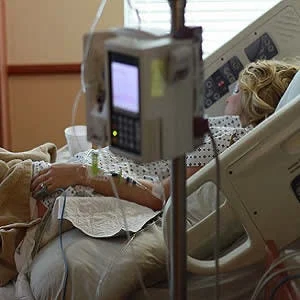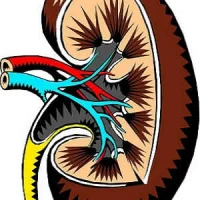Hepatic dysfunction and jaundice are traditionally viewed as late features of sepsis and other critical illnesses. Identifying true cholestatic liver dysfunction is difficult given the lack of specificity of standard laboratory tests, especially in the context of a complex systemic condition as critical illness. However, very high levels of cholestatic markers that are sustained in prolonged critically ill patients almost always indicate a complicated illness course and should be monitored closely, suggests a new study to appear in the journal CHEST.
During sepsis and other critical illnesses, the liver is a fundamental player in the host defence mechanisms as it regulates a wide range of metabolic, endocrine and immunological processes. However, inflammation and hypoxaemia severely challenge the hepatic microcirculation and function. Abnormal liver tests, such as hyperbilirubinemia, elevated gamma glutamyl transpeptidase (γ-GT), alkaline phosphatase (ALP), alanine transaminase (ALT) and aspartate transaminase (AST) are reported in up to 61% of patients admitted to the ICU. Elevated circulating levels of ALT, AST, ALP and γ-GT can further indicate liver injury and cholestasis.
Interestingly, recent studies suggest that cholestatic alterations already occur early in the course of critical illnesses, perceived only as minor abnormalities in routinely used biochemical liver tests.
"Inflammation-induced alterations in the transport of bile acids appears to drive bile acids and bilirubin towards the systemic circulation. Ongoing bile acid synthesis with an, at least partial, loss of feedback inhibition further contributes to elevated circulating bile acids and bilirubin," the CHEST study says. "To what extent these changes reflect a biochemical epiphenomenon, true illness-induced hepatic dysfunction or a beneficial and adaptive response to illness should be further investigated."
In daily clinical practice, the most often used diagnostic criterion for critical illness-induced cholestasis is a total plasma bilirubin concentration higher than 2 or 3 mg/dl (34-41mmol/L) often combined with a maximally two or threefold increase in ALP and γ-GT levels. Accordingly, up to 20% of ICU patients fulfil these diagnostic criteria of critical illness-induced cholestasis at admission. However, cholestatic alterations may be more prevalent, considering that most patients display milder derangements of cholestatic markers that do not exceed these cutoff levels.
As to date, no specific liver test for critical illness-induced cholestasis is available, it remains a “diagnosis of exclusion”, according to the CHEST study. In absence of a recognised hypoxic or pharmacotoxic insult, obstruction or pre-existing liver disease, abnormal liver tests more likely indicate critical illness-induced cholestasis.
Prevention of cholestatic liver dysfunction comprises minimising inflammation and hypoxia in the liver and preventing hyperglycaemia, avoiding early use of parenteral nutrition and reducing the administration of avoidable drugs, the study explains.
"Future research on the effects of bile acids and on modulating underlying drivers of critical illness-induced cholestasis is warranted as this could open perspectives for a targeted diagnostic approach and ultimately for novel therapies to improve outcome," the study notes.
Source: CHEST
Image Credit: Pixabay
References:
Jenniskens, M. et al. (2017) Cholestatic Alterations in the Critically Ill: Some New Light on an Old Problem. Chest. doi.org/10.1016/j.chest.2017.08.018
Latest Articles
critically ill patients, Cholestatic Alterations, cholestatic markers
Very high levels of cholestatic markers that are sustained in prolonged critically ill patients almost always indicate a complicated illness course and should be monitored closely










